5 Things Every D&D Campaign Can Use From Mythic Odysseys Of Theros
Table of Contents
Mythic Odysseys of Theros brings Greek myths to Dungeons & Dragons, but you can use some its content in any D&D world.
You Are Reading :5 Things Every D&D Campaign Can Use From Mythic Odysseys Of Theros

Dungeons & Dragons Fall 2020 will be marked by the release of Rime of the Frostmaiden, a horror-themed adventure. Until then, however, D&D players still have a brand new world to explore in Mythic Odysseys of Theros. The most recent (at this moment) D&D book borrows the Greek myth-inspired land of Theros from Magic: The Gathering. This gives players a chance to fight legendary medusas, play as satyrs, and receive blessings from a menagerie of gods.
Yet while the characters and trappings are decidedly Greek, Theros does have plenty to offer for D&D campaigns set in other worlds. Here we’ll show you how to have fun with Theros, even if you’re playing as Dragonborn paladin of Bahamut or a Changeling artificer in Eberron.
The Piety System
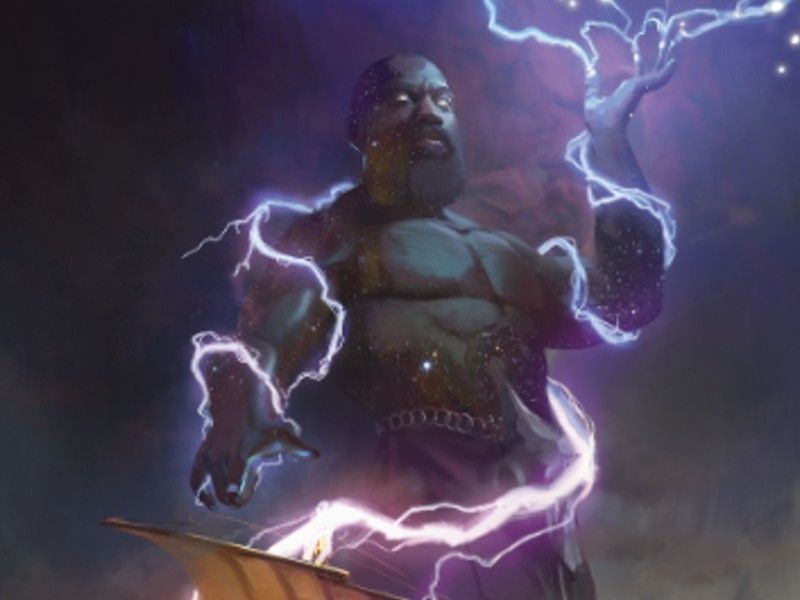
The Greek myths revolved largely around the schemes, curses, and blessings of the gods. Theros has a similar pantheon that is very active in shaping the land. Players who create characters in Theros can choose to serve one of the gods and be rewarded for it. On the DM side of things, this takes the form of the Piety System. Players can earn Piety Points for performing acts their god would approve of. For instance, the nature goddess Nylea likes it when her champions destroy unnatural monsters like undead. Players can also lose their god’s favor. Using Nylea as an example again, she will disapprove of mortals who foster the growth of cities and other constructs that defy nature. The best part is that reaching certain piety milestones earns spells or other features.
Appeasing a capricious god is a very Greek myth dynamic, but that doesn’t mean the Piety System has to be. In fact, it can be a great way for DMs to track and inform paladins on how they’re doing in their god’s eyes. Tempting a paladin to break their oath can be fun, but paladin players might feel robbed if they’re suddenly thrust into the role of oathbreaker. The Piety System is easy to translate to any god, and will give paladin players smaller goals to work towards during a large campaign.
The Athlete Background
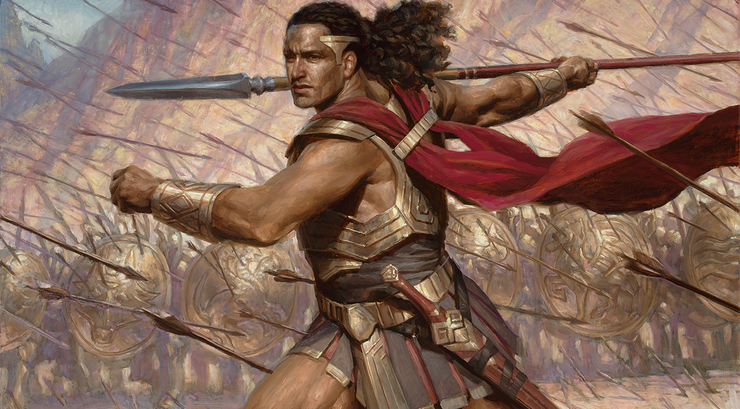
Athlete is a new background that makes total sense in Theros. It shares a lot with the Folk Hero background in the Player’s Handbook, in that it makes the player character a local celebrity. Only instead of being a monster-slayer right off the bat, the Athlete is, well… an athlete. They’re the original Olympic Games stars, fitting the Greek setting. But that doesn’t mean the Athlete can’t be re-tooled to exist outside of Theros.
If a player wants to play someone who has just been thrust into a life of adventuring, the Athlete background could be a great foundation. Perhaps they’re a competition archer or fencer who now must join the party to fight goblins attacking their hometown. Being an athlete explains why they’re in adventuring shape even if they lack the experience of a soldier or wizard.
Mythic Monsters
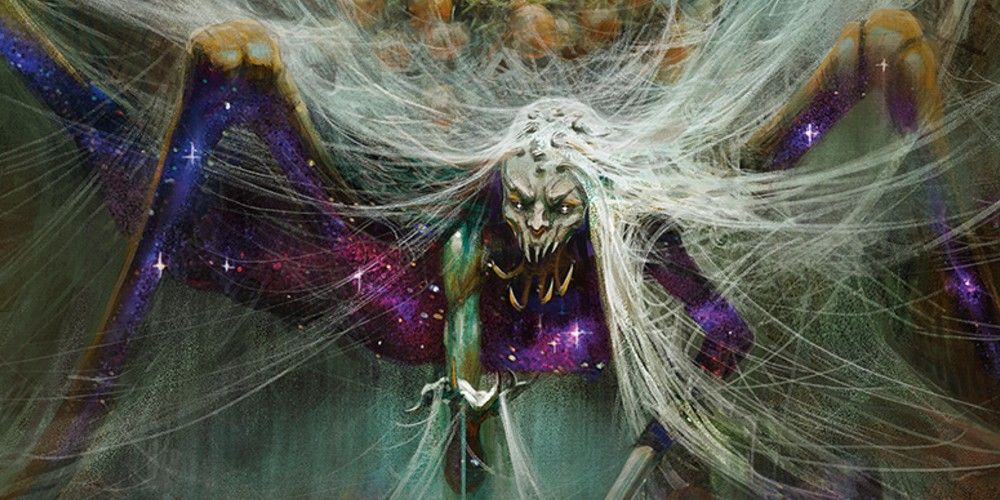
Ever wanted to clash with a titan? Sadly, it doesn’t always turn out to be as epic as it sounds in Dungeons & Dragons. The importance of action economy in 5e makes it hard for one giant boss monster to make an impact. Instead, it’s often more deadly to give the boss a small army of minions to rush the casters. Theros provides a more exciting alternative in Mythic Monsters.
Mythic Monsters don’t die when they hit zero HP. Instead, they gain more HP and some kind of new power. This plays out like video game bosses who suddenly get a second form, and can often serve as a jaw-dropping surprise in the middle of a crucial fight. Sadly, there are only three Mythic Monsters at the moment. Independent creators have taken it upon themselves to make more, and their products are worth a look. Who says titan clashes have to be a Greek thing?
New And Improved Slings
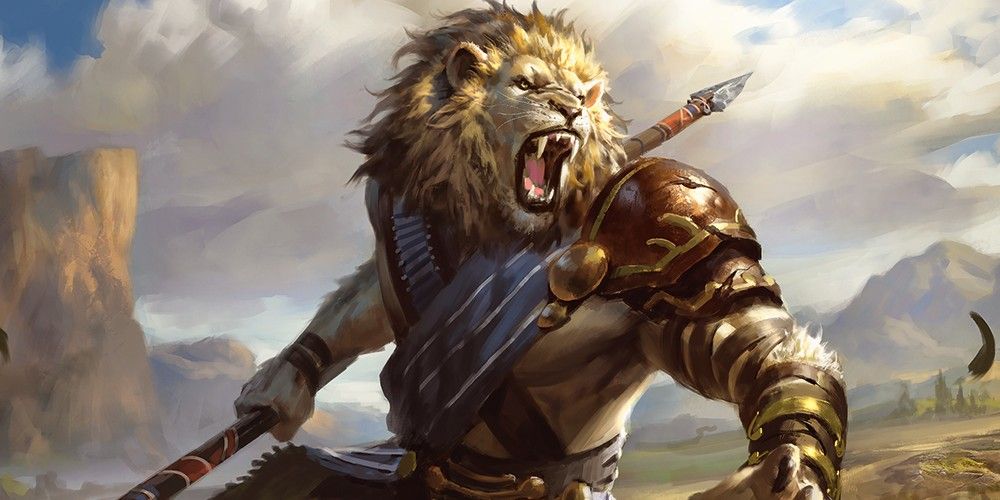
One problem that longtime players of Dungeons & Dragons 5e run into is the lack of weapon variety. There’s a whole table of weapons in the Player’s Handbook, but it often turns out that only a handful are really worth it. Why would a rogue not use a rapier? How can a barbarian turn down a greataxe if they’re not using a shield? Due to the temptations to optimize, many weapons with great flavor potential sit on the proverbial shelf collecting dust. Case in point: the sling.
The basic 5e sling does 1d4 damage at 30/120 range. It’s inferior to a bow in every way, and certainly doesn’t stack up to the most-used cantrips. Theros fixes slings in two ways. One is the addition of magical ammunition. The Sling Bullets of Althemone are +2 ammunition and also carry a spell effect as determined by the DM. These can range from stunning the target to putting them under the effect of the banishment spell. The other improvement is the magic item Two-Birds Sling, a +1 sling that can hit a second target after a successful attack.
New Subclasses For Paladins And Bards
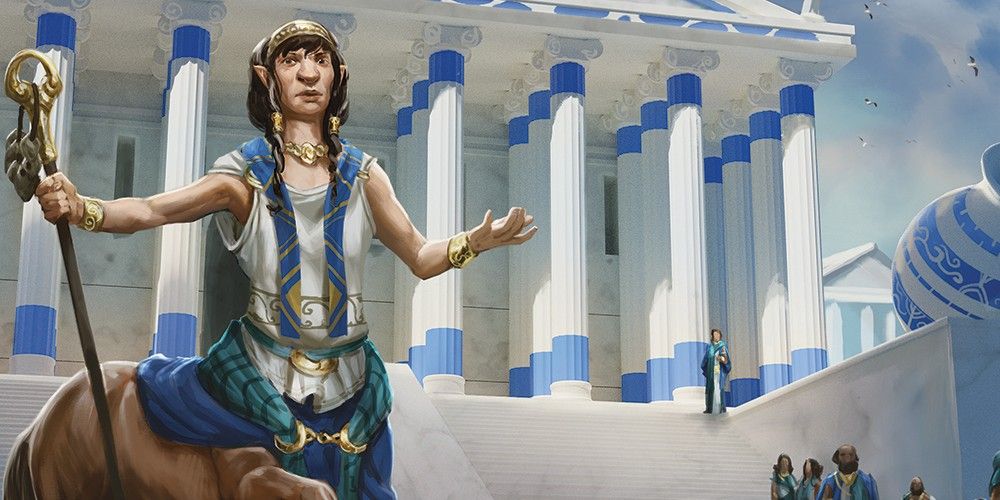
Nothing get a D&D player excited to roll a new character than new character options. Theros brings two big ones to the table with official versions of previously-seen subclasses: the College of Eloquence Bard and the Oath of Glory paladin. The Eloquence bard follows the traditions of great philosophers and speakers of Ancient Greece. The Glory paladins are heroes dedicated to creating their own place in history, like the heroes of myth. Yet both of these subclasses can be tweaked to fit other worlds.
The essence of an Eloquence bard is the power of a good argument. These bards are great for those who like to talk their way out of (or into) any situation. If a player is looking for a bard that performs with something other than music, they should look into this subclass.
The Glory paladin is a wonderful roleplay option for those who want to be a proud, blustering warrior. It also removes the class from the need to serve a deity, instead turning one’s own confidence or service to a greater destiny into power. Because of this, the subclass can easily be take out of Theros and put into any other world.
Link Source : https://www.thegamer.com/5-things-every-dnd-dungeons-dragons-campaign-use-mythic-odysseys-theros/
